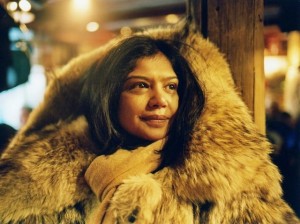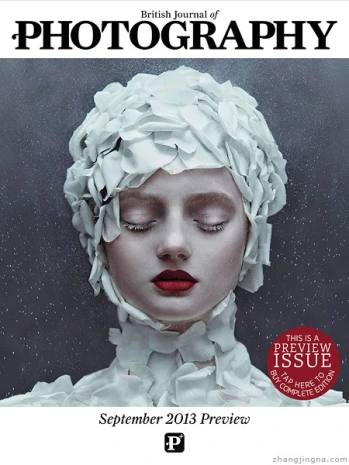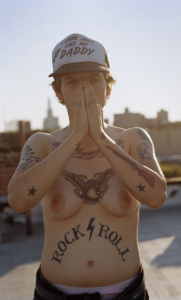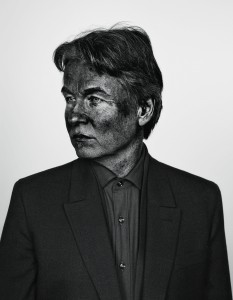OPENHOUSECURATE invited photography polymath Krishna Sheth to host a workshop recently in her alternative talent; traditional Indian massage. Possibly one of the best-kept secrets in the industry. It gave us a chance to discuss her role as a Photography Editor.
RM: You were a photography editor at the Telegraph magazine for many years; tell me about your work for the title and why you stayed for so long.
KS: I was at The Telegraph Magazine for 17 years, started as a junior researcher hired by Emma Soames. I was freelancing on the Sunday Telegraph Magazine and at the time, Princess Diana passed way. I was asked to help on the special obit issue and never looked back. I have to say I loved being at the Telegraph, it was more than just a job, it was passion and love for the magazine and more importantly the TEAM, which really was my family.
Commissioning was a large part of my role there.
The BAFTA special issues the most challenging & ultimately rewarding. We would start working on them three or four months prior to issue date, covering between thirty and sixty actors/directors/producers and writers. Once we’d decide on the handful of photographers who would shoot for the project, I would liaise with the publicists to anchor down the shoot. I handled all aspects of production, including hair/make-up/location/budgets as well as being on location.
I am particularly proud of the war reportage stories that were done by some extremely talented photographers including Marcus Bleasdale, whose passion for bringing the war in CAR (Congo African Republic) to the pages of world media went beyond our expectations.
RM: Bleasdale is particularly interesting because he has developed a method of addressing the reactionary nature of photojournalism. He uses his photography as a tool for advocacy & prevention. In a recent interview with Lucy Davies, he talks about the magazine’s responsiveness and long commitment to publishing his Congo work. Trust plays a big part in his relationship with the title.
KS: We built up a very strong relationship with Marcus and we pushed his stories to create maximum impact by giving them the cover & extended spreads. He is able to walk the fine line between the need to convey journalistically the harsh realities of the conflict in Congo & creating an elegant compelling document that talks to us of the human condition.
RM: You’ve seen many major changes in the way editorial photography is produced. What have been the most profound, the beneficial and the most risky?
KS: First and foremost I would say technology. The sweeping advances of the digital revolution and the web. When I first started at the Express newspaper over 20 years ago, as an eager researcher, I would spend hours bent over hundreds of transparencies, contact sheets and prints editing for a selection. Sadly, though the true editorial power was been given way to the advertisers who have the upper hand in making sure their content has the most pages. For example when you have a strong photo essay and feature, I will argue for extra pages that have already been given to advertisers. In the end editorial content loses over money!
RM: Fred Ritchin, the polemic former picture editor of the New York Times magazine, write about technology and advertising in his book Bending the Frame. Whilst he was at NYT he was always concerned that the placement of advertising image “might diminish the import of a serious photograph”
KS: Commissioned work is now almost 90% digital, which has changed the way we photograph. The benefit of this is the speed at which images are delivered and the choice, but that’s it. Budgets have been cut by more than 50% and that has had a huge impact on the quality & authenticity of British print media.
RM: As recently commented on by the chair of the World Press Photo jury, Gary Knight. He recognized from the entries into the competition this year that only a handful of publications like the National Geographic, are commissioning long form visual journalism now. The bottom has fallen out of resourcing stories that require both intelligence and economic investment.
RM: Would you say there a universal methodology when it comes to picture editing? Having discussed our work, can you pin down what you look for in a photographer.
KS: It all depends on the story & often constraints beyond my control to be very honest. Qualities I look for in a photographer are a strong sense of visual identity, trustworthiness and the photographer has to be able to take responsibility to get us the images that illustrate the journalistic aspect of the story. They have to remember that first and foremost they need to deliver the brief. Patience and personality are also important as they could be working on the story for a long time and will have to develop trust with the subject matter.
In terms of new talent, I would always try and see as many young photographers and students, and visit end of the year shows at colleges. I also kept a close eye on PDNs 30 new emerging talent published each year, which covers photographers worldwide. I also gave photographers assistants an opportunity on small regular features, to help them get on the publishing ladder and encourage their work.
RM: What do you think photographers want, what is important to them, when their work is reproduced?
KS: The most important thing for a photographer is a faithful re-production of their original image. To also give the photography the space within the magazine it deserves to illustrate the story.
RM: So finally, can you share who or what are your influences?
KS: It was an education to work with Cheryl Newman the Photography Director; she nurtured my interest, sharing her wealth of experience and expertise in all aspects of editorial photography. Cheryl quite simply taught me to have an eye for a good photograph.
My first job on the photo desk at the age of 29 years was with the Express newspapers group. I worked for John Lyth, who was the Picture Editor and had been for 35 years in Fleet Street. He was incredibly tough. After 3 months on the job, he took me out for a drink and said if you want to succeed and be taken seriously in this industry then there is ONE RULE, “Never sleep with photographers”. That advise still makes me chuckle. He certainly gave me a platform, encouraged me and gave me the confidence to do well.
Massaging is something I have been practicing for over 20 years. I was taught by a spiritual guru who lived in Kenya, and while making regular visits to my grandmother’s house treating my mum and aunts, he took a particular interest in my strength. He showed me various techniques and the ability to combine it with my mind and intuition. I have never been to a massage school; everything I know has been passed down through this wonderful man. The rest I learnt as I went along and gained experience in massaging with acu-pressure to heal people.
I like treating people, it gives me one on one time with them, a chance to connect and more importantly help them physically and mentally in their body massage. I have to say I love it!




